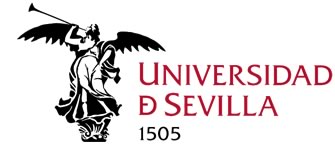Proyecto I+D+i
New Bio-ceramisation processes applied to vegetable hierarchical structures (TEM-PLANT)
Responsable: Julián Martínez Fernández
Tipo de Proyecto/Ayuda: 6º Programa Marco de la U.E.
Referencia: FP6-NMP4-CT-2006-33277
Web: http://cordis.europa.eu/projects/rcn/80025_en.html
Fecha de Inicio: 01-10-2006
Fecha de Finalización: 30-09-2010
Empresa/Organismo financiador/es:
- Commission of the European Communities (Research Directorate-General)
Socios:
- Consiglio Nazionale delle Ricerche (Anna Tampieri)
- Friedrich-Alexander-Universitaet Erlangen-Nuernberg (Frank Müller)
- Kompetenzzentrum Holz GmbH (Rupert Wimmer)
- Universitá di Bologna (Maurilio Marcacci)
- Fin-Ceramica Faenza SpA (Roberta Martinetti)
- Laboratoire d´Evaluation des Matériels Implantables (Harmand Marie-Françoise)
- Technische Universiteit Eindhoven (Nico A. J. M. Sommerdijk)
- Norwegian University of Science and Technology (Kristiina Oksman)
Contratados:
- Investigadores:
- José Vicente García Barbosa
- David Hernández Maldonado
- Carmen Torres Raya
- María del Carmen Vera García
- Técnicos/Personal Administrativo:
- Miguel Antonio Bautista
- María Elena Cama Jiménez
- Carmen García Gañán
- María Jesús Gutiérrez Solís
- Rafael Torrejón Martínez
Resumen del proyecto:
TEM-PLANT project focuses on the development and application of breakthrough processes to transform plant-derived hierarchical structures into templates for the exploitation of innovative biomedical devices with smart anisotropic performances and advanced biomechanical characteristics, designed for bone and ligament substitution. Natural bio-structures usually have properties superior to those of analogous synthetically manufactured materials with similar phase compositions. The remarkable biomechanical properties of bone and ligament tissues depend on their hierarchic structure which is an organized assembly of structural units at increasing size levels. In fact, these structures are highly organized from the molecular to nano-, micro- and macro-scales, always in a hierarchical manner, with intricate but extremely functional architectures able to constantly adapt to ever changing mechanical needs.The TEM-PLANT project primary addresses the nano-biotechnologies area and will push the current boundaries of the state-of-the-art in production of hierarchical structured biomaterials. By combining biology, chemistry, materials science, nanotechnology and production technologies, new and complex plant transformation processes will be investigated to copy smart hierarchical structures existing in nature and to develop breakthrough biomaterials that could open the door to a whole new generation of biomedical applications for which no effective solution exists to date. Starting from suitably selected vegetal raw material, ceramization processes based on pyrolysis will be applied to produce carbon templates, which will be either infiltrated by silicon to produce inert SiC ceramic structures or exchanged by electrophoresis deposition to produce bioresobable ceramics. For ligament yielding two processes will be developed: pH-controlled and electrophoresis-controlled fibration to generate fibrous collagenous cords with high tensile strength and wear-resistance.

